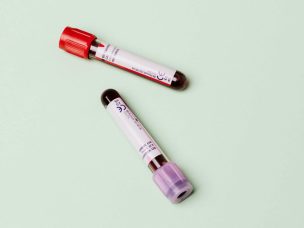![]() Medically reviewed by Dr. Shani S. Saks, D.O. on August 2, 2023
Medically reviewed by Dr. Shani S. Saks, D.O. on August 2, 2023
Intracardiac echocardiography-guided zero-fluoroscopic cryoballoon ablation was found to be a feasible approach in atrial fibrillation patients and was without any significant effects related to complications or success rates of the procedure.
Zero-fluoroscopic cryoballoon ablation (CBA) is a challenging intervention owing to the absence of visual mapping; however, intracardiac electrocardiography (ICE) has allowed fluoroless atrial fibrillation (AF) ablation using an electroanatomical mapping system.
This study published in the journal Europace evaluated the safety and efficacy of ICE-guided zero-fluoroscopic (Zero-X) CBA for AF patients.
Study Characteristics
A total of 100 AF patients were enrolled in the study, with 50 patients in the conventional group and 50 patients in the Zero-X group. The mean age and left atrium diameter of the patients were 60.4 ± 10.1 years and 39.4 ± 6.2 mm, respectively. The median time duration between AF detection and CBA was 18.5 months.
Intracardiac Echocardiography-Guided Zero-Fluoroscopic Cryoballoon Ablation
Successful pulmonary vein isolation was achieved in all patients. The total procedure time in conventional and Zero-X groups was 71.9 min and 70.1 min, respectively. Compared to the conventional group, the Zero-X group had a significantly shorter mean fluoroscopy time and lesser radiation exposure (p < 0.001). None of the patients reported procedure-related complications. Two patients in the conventional group and three patients in the Zero-X group experienced transient diaphragmatic paralysis.
Comparable Linear Ablation for Cavotricuspid Isthmus (CTI)
Linear ablation for cavotricuspid isthmus (CTI) was conducted in 20 instances, 9 in the Zero-X group and 11 in the conventional group, with no significant difference (P = 0.617).
Similar Procedure Times in Zero-X and Conventional Groups
Zero-X and traditional groups took 70.1 and 71.9 minutes, respectively, from groin penetration to fisherman’s knot suture (P = 0.722). Both groups had similar left atrium indwelling and complete ablation timeframes.
Significantly Reduced Fluoroscopy Time and Radiation Exposure in Zero-X Group
The Zero-X group had a considerably reduced mean fluoroscopy time (0.008 minutes vs. 9.0 minutes, P < 0.001). One Zero-X patient needed fluoroscopy to capture the phrenic nerve during right-sided PVI. The Zero-X group had much lower radiation exposure (0.02 mGy vs. 29.4 mGy, P < 0.001).
No Significant Difference in Occurrence of Transient Diaphragmatic Paralysis
Transient diaphragmatic paralysis occurred in three Zero-X patients and two conventional individuals, with no statistically significant difference between the groups (P = 1.000).
Atrial Tachyarrhythmia Recurrence Rates in Zero-X and Conventional Groups
During the follow-up period, eight patients in the Zero-X group and nine patients in the conventional group demonstrated a recurrence of atrial tachyarrhythmia. The mean duration between the procedure and the detection of recurrent arrhythmia was 295 days. The independent predictor for AF recurrence was the left atrium dimension. The procedure did not influence the clinical outcomes.
Source
Ahn, J., Shin, D. G., Han, S. J., & Lim, H. E. (2023). Safety and efficacy of intracardiac echocardiography–guided zero-fluoroscopic cryoballoon ablation for atrial fibrillation: a prospective randomized controlled trial. Europace, 25(5). https://doi.org/10.1093/europace/euad086










